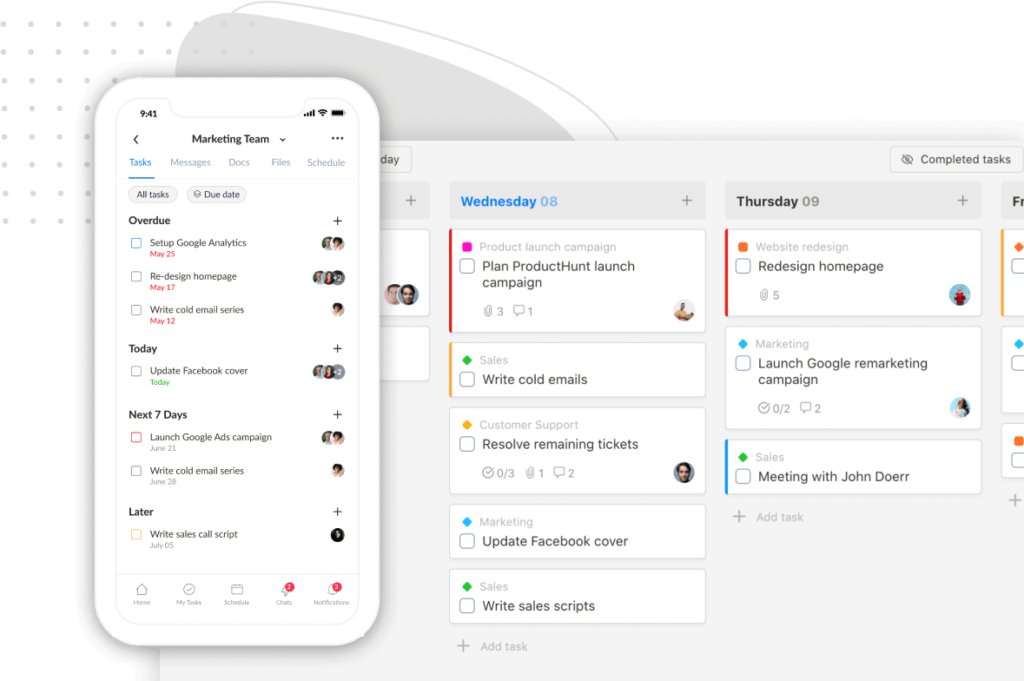Struggling to meet deadlines with your team? Feeling like your projects are a constant game of catch-up?
You’re not alone!!
In today’s fast-paced work environment, where innovation is key and success often hinges on shared ideas, many teams grapple with inefficiencies that hold them back.
The culprit? A lack of true team collaboration.
But what is team collaboration, and why is it so crucial? This comprehensive guide will break it all down for you.
We’ll delve into the core principles of successful teamwork, explore the benefits it unlocks, and equip you with the knowledge and collaboration tools to build a thriving, high-performing team.
Ready? Let’s dive in!
I. What is team collaboration?
Imagine a team where everyone works in their own silo, ideas go unheard, and communication feels like a game of broken telephones.
Now, picture the opposite:
A group where members openly share perspectives, build on each other’s strengths, and move seamlessly towards a common goal.
That’s the power of team collaboration in action!
But what exactly does it mean to collaborate as a team? At the heart of it, team collaboration goes beyond teamwork.
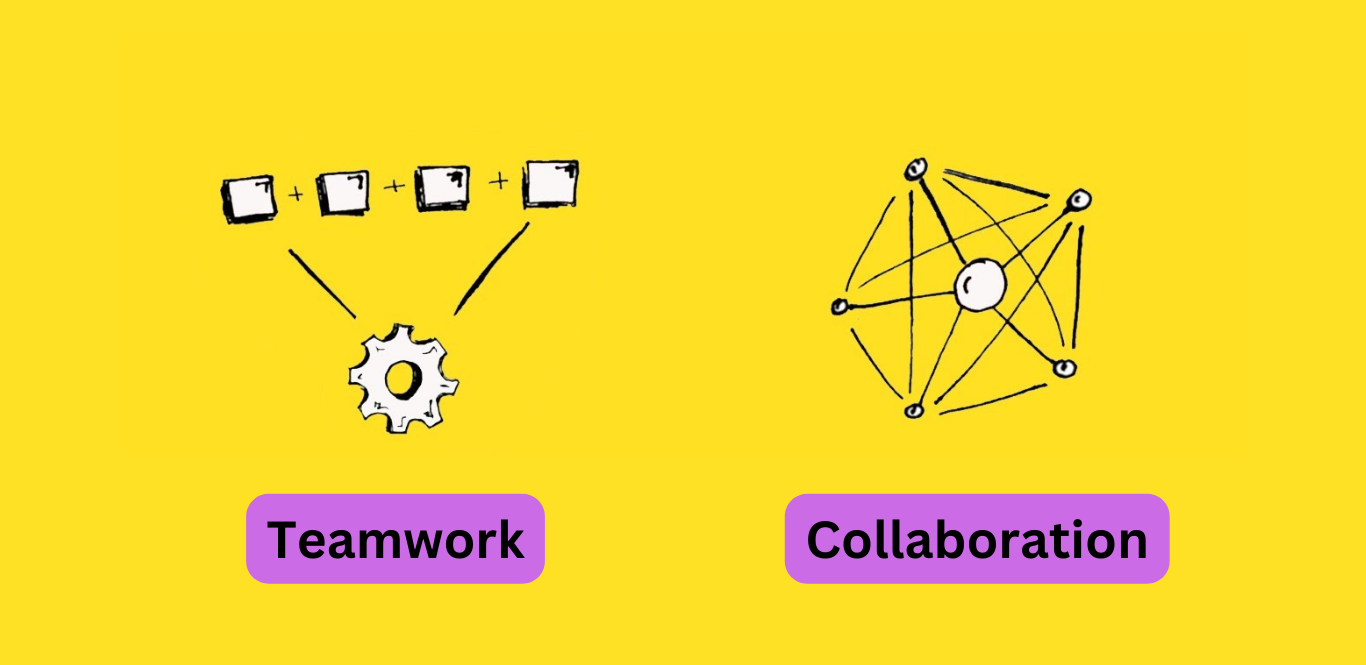
Team collaboration is about fostering a positive work environment where individual team members with diverse skills and experiences come together to create something greater than the sum of their parts.
It’s about open communication, shared team goals, and a mutual respect for different viewpoints.
It’s about harnessing the collective intelligence of your entire team to achieve remarkable results.
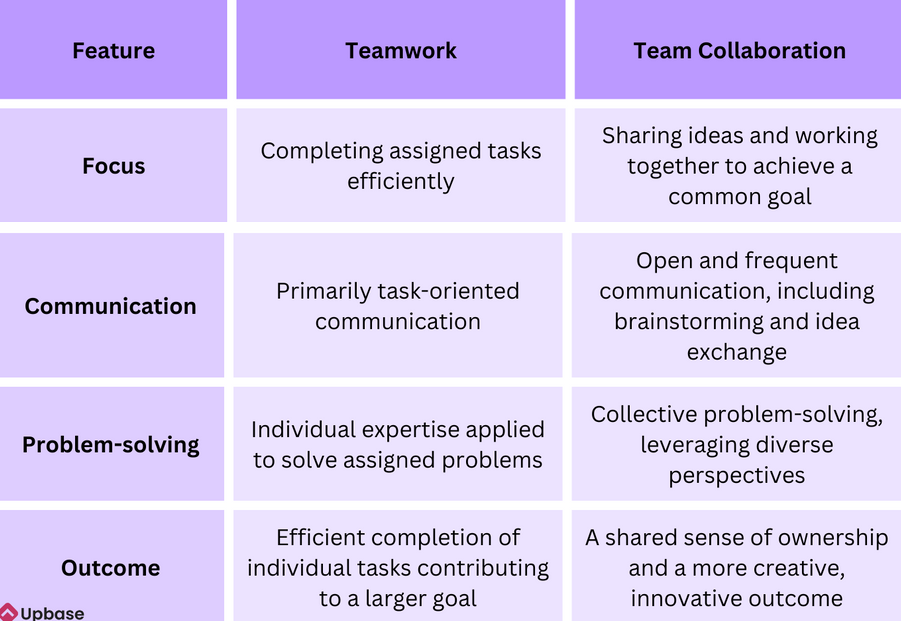
In short, what is team collaboration? It is when people with complementary skills work together in a genuinely connected and collective way to achieve a common goal.
The key characteristics of successful collaboration include:
- Frequent, open, and clear exchange of ideas and info.
- A unified understanding of the organization’s goals and the value each team member brings.
- Mutual trust and respect.
- Defined roles and responsibilities.
- Effective conflict resolution.
II. Why is team collaboration important?
Now, let’s address the “why” aspect.
Why is simply working in a team not enough? And why is team collaboration important so much?
Well, the primary reason is today’s dynamic business landscape, where agility and innovation are paramount.
Collaboration unlocks a treasure trove of benefits that teamwork alone doesn’t, propelling teams to new heights.
1. What are the benefits of effective collaboration?
Here’s how a collaborative environment contributes to a successful team:
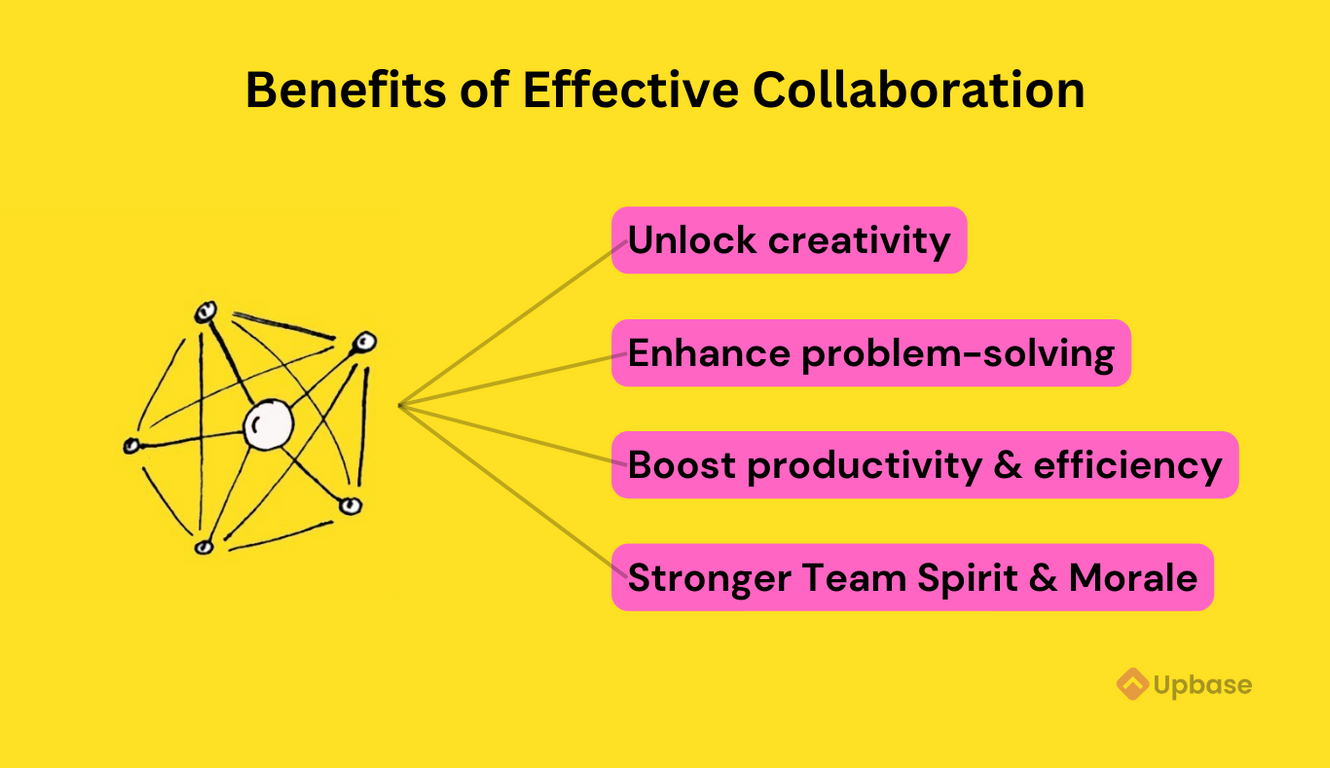
Unleashing Creativity
When team members feel comfortable sharing ideas and building on each other’s thoughts, a spark of creativity ignites.
Good team collaboration fosters a breeding ground for out-of-the-box solutions and groundbreaking ideas.
Enhanced Problem-Solving
Collaboration brings a wider range of perspectives to the table.
By combining diverse viewpoints and expertise, collaborative teams can tackle complex challenges more effectively and arrive at innovative solutions.
Boosted Productivity and Efficiency
When team members openly share information, collaborate effectively on solutions, and leverage each other’s strengths, projects move smoother and deadlines are met with greater ease.
Stronger Team Spirit and Morale
Open communication and shared goals foster a sense of camaraderie and ownership within the team.
Team members feel valued, motivated, and more invested in the team’s success, leading to higher morale and better team performance.
2. Which is the best example of team collaboration?
The real-world examples are plentiful.
A basketball team exemplifies real-time collaboration. Players with specialized skills (shooting, passing, rebounding) work together on offense and defense, using clear communication and anticipation to achieve a common goal: scoring points and winning the game.
Or, imagine a sales team closing a complex deal. They collaborate with a product specialist to ensure technical expertise and a marketing teammate to craft a compelling proposal. This unified effort increases win rates.
These are just a glimpse of the power that good team collaboration unleashes.
III. Common Pain Points in Team Collaboration
The road to effective collaboration isn’t always smooth sailing.
Even the most well-intentioned teams can face roadblocks that hinder their progress.
Let’s explore some common pain points that can stall collaboration and what you can do to overcome them:
1. Communication Silos
Information gets stuck in individual corners, leading to misunderstandings, missed deadlines, and duplicated efforts.
2. Unclear Goals and Direction
Without a clear vision of the team’s objectives and individual roles, members can feel lost, unmotivated, and unsure of how their work contributes to the bigger picture.
3. Conflict Aversion or Unhealthy Conflict
Avoiding healthy debate can stifle creativity, while unchecked conflict can create a toxic work environment.
4. Knowledge Silos and Information Hoarding
Team members hold onto information closely, hindering knowledge sharing and preventing others from contributing effectively.
5. Disengagement and Lack of Ownership
Feeling like a cog in the machine demotivates team members. When individuals don’t feel a sense of ownership or purpose, it hinders positive collaboration.
These roadblocks can be frustrating, but don’t despair!
The good news is that with the right strategies and a commitment to fostering a collaborative environment, you can overcome these challenges and unlock the true power of your entire team.
IV. Strategies For Building Team Collaboration
A. Building a Collaborative Team Environment
Now that we’ve talked about the roadblocks, let’s get down to business!
Here are some battle-tested strategies to smash those communication silos, foster a sense of shared purpose, and build a collaborative team that truly clicks:
1. Open Communication is King
We all know it’s important, but how do we make it happen?
Create safe spaces for open and honest dialogue. Think: casual coffee chats, not interrogation rooms!
Encourage team members to share ideas, ask questions, and voice concerns without fear of judgment.
Use a mix of communication channels – team huddles, online chats, whatever works for your crew – to make sure everyone has a voice.
2. Set SMART Goals (Specific, Measurable, Achievable, Relevant, Time-bound)
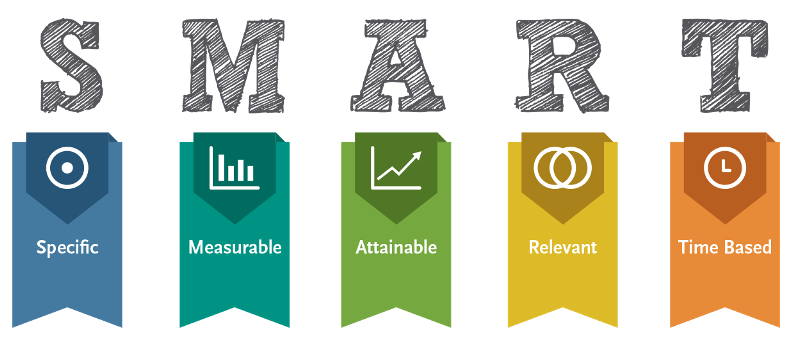
Let’s ditch the vague goals and get crystal clear on what your team is trying to achieve.
Define your goals together and make sure everyone understands their individual role in making it happen.
Regularly check in and discuss progress – this keeps everyone on the same page and fosters a sense of shared ownership.
3. Embrace Healthy Conflict
Disagreements happen, but they don’t have to be a bad thing!
Encourage respectful debate and active listening.
Focus on finding solutions, not pointing fingers. Celebrate diverse perspectives – different viewpoints can lead to way more innovative solutions than groupthink.
4. Knowledge Sharing is Power
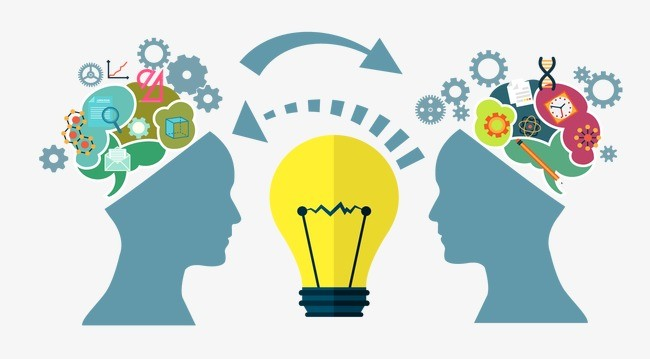
Let’s break down those knowledge silos!
Create a culture where everyone feels comfortable sharing their expertise.
Use team wikis, knowledge-base platforms, or even hold brown-bag lunch sessions where team members teach each other what they know.
5. Empowerment and Recognition
Give your team members ownership over their tasks and celebrate their wins!
Recognize individual contributions, but also emphasize the importance of teamwork in achieving success.
This fosters a sense of accountability, keeps everyone engaged, and motivates them to go the extra mile for the team.
These are just a few key strategies to get you started.
By implementing these steps and fostering a culture of collaboration, you can transform your team into a dream machine, ready to tackle any challenge and achieve incredible results together!
B. Essential Collaboration Skills To Have
Hold on, there’s more to the story!
Even the most amazing plan for collaboration can fall flat if your team doesn’t have the right skills in their toolbox.
To truly thrive in this team environment, your crew needs to sharpen some specific skills that make working together a breeze. Let’s talk about some key areas to focus on:
1. Active Listening
This ain’t just about zoning out while someone else talks. It’s about truly paying attention, understanding what they’re really saying, and asking questions to get clear.
When you actively listen, you build trust, rapport, and make sure everyone’s on the same page – no more crossed wires!
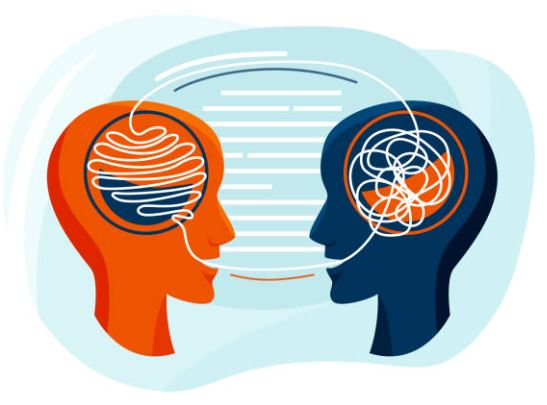
2. Effective Writing and Speaking Skills
To be able to clearly explain your ideas, communication skills both in writing and speaking aspects are super important.
Express yourself clearly and concisely, tailor your communication style to who you’re talking to, and don’t be afraid to ask for feedback to make sure your message lands.
3. Empathy and Understanding Different Perspectives
Collaboration is all about respecting your teammates and seeing things from their side.
Try to step into their shoes, appreciate their viewpoints, and acknowledge the value they bring to the table.
Different perspectives are a good thing – they can lead to way more creative solutions!
4. Conflict Resolution
Disagreements happen, it’s life! But skilled team members can navigate them like champs.
Focus on finding common ground, brainstorm win-win solutions, and use healthy debate to reach the best outcome for everyone.
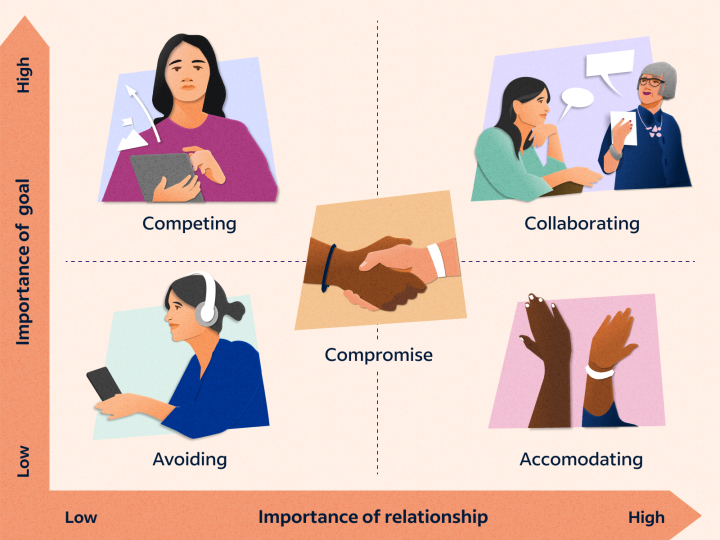
5. Problem-solving and Critical Thinking
Collaboration is all about tackling challenges as a team.
Sharpen those problem-solving skills, think critically, and don’t be afraid to approach problems from different angles. Two minds (or ten!) are always better than one.
6. Accountability and Ownership
Taking ownership of your tasks and holding yourself accountable is key. This builds trust within the team and makes sure everyone’s pulling their weight to achieve those shared goals.
By developing these essential skills within your team, you’ll create a collaborative powerhouse ready to conquer any challenge and achieve incredible things together.
In the next section, we’ll explore some awesome tools that can take your team’s collaboration to the next level!
C. Collaboration Tools for the Modern Collaborative Workplace
Remember those days of endless email chains, scattered documents, and frustrating conference calls with dropped connections?
Thankfully, the modern workplace offers a treasure trove of team collaboration tools.
They’re designed to streamline communication, boost efficiency, and empower your entire team to work together seamlessly, regardless of location. Here’s a quick glimpse into some of the key categories:
1. Project Management Tools
Project management platforms keep your team organized, on track, and accountable.
Assign tasks, set deadlines, track progress, and foster team collaboration through shared workspaces and real-time communication features.
2. Communication Tools
Stay connected with your team instantly, no matter where they are.
Communication tools foster instant messaging, video conferencing, file sharing, and seamless communication across all devices.
3. Cloud-based Document Collaboration Tools
Gone are the days of version control nightmares!
Cloud-based tools like Google Docs let team members work on documents simultaneously, see edits in real-time, and ensure everyone is always on the same page.
These are just a few examples, and the right collaboration tools for your team will depend on your specific needs and preferences.
The key takeaway?
Don’t be afraid to leverage technology to your advantage.
The right set of collaborative tools can be a game-changer, empowering your team to work smarter, not harder, and achieve remarkable results together.
V. How can Upbase contribute to better team collaboration?
Normally, managing team collaboration requires juggling multiple separate apps, which might cause scattered information and hinder project flow.
Upbase offers a different approach.
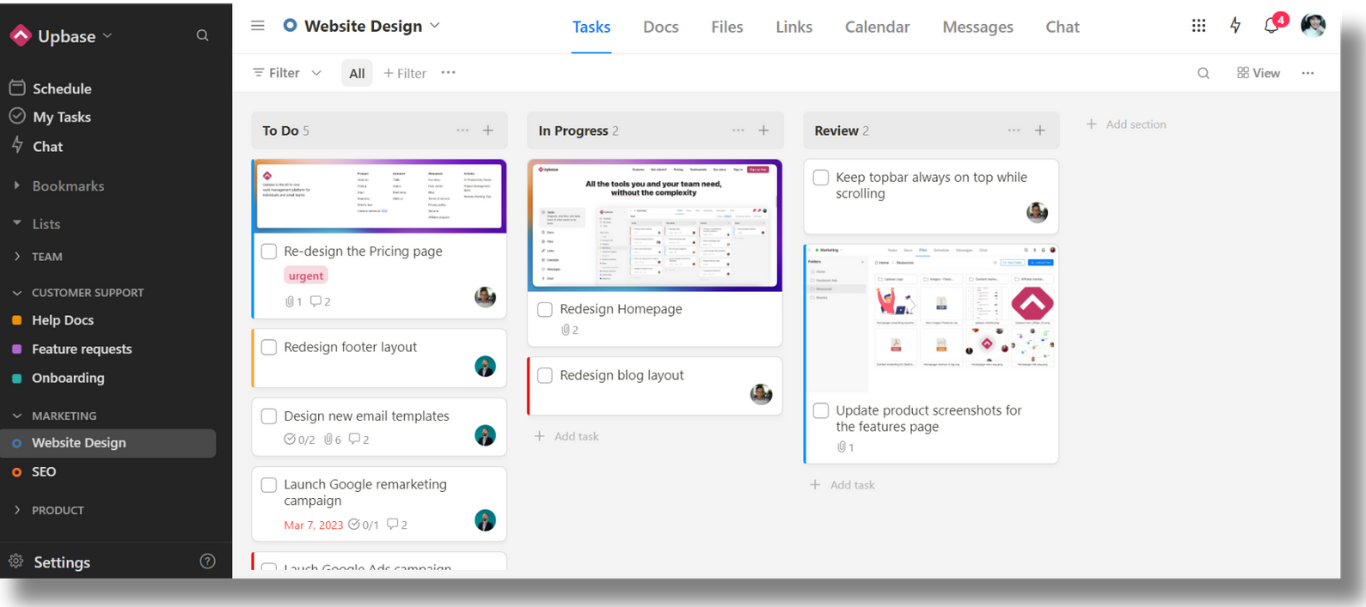
It’s an all-in-one platform combining the functionalities of project management tools, communication platforms, cloud-based document collaboration tools, and more.
Imagine this:
A central hub where your team members can manage projects, assign tasks, track progress, collaborate on project-related data, and stay connected with each other.
Upbase eliminates the need to switch between multiple tools, reducing confusion, and fostering a streamlined collaborative experience.
Upbase’s key features
Here’s what makes Upbase a powerful collaboration tool:
- Folders and Lists to organize team projects effortlessly.
- Tasks module, where you can assign tasks to team members, set deadlines, add notes and attachments, and tag collaborators in comments.
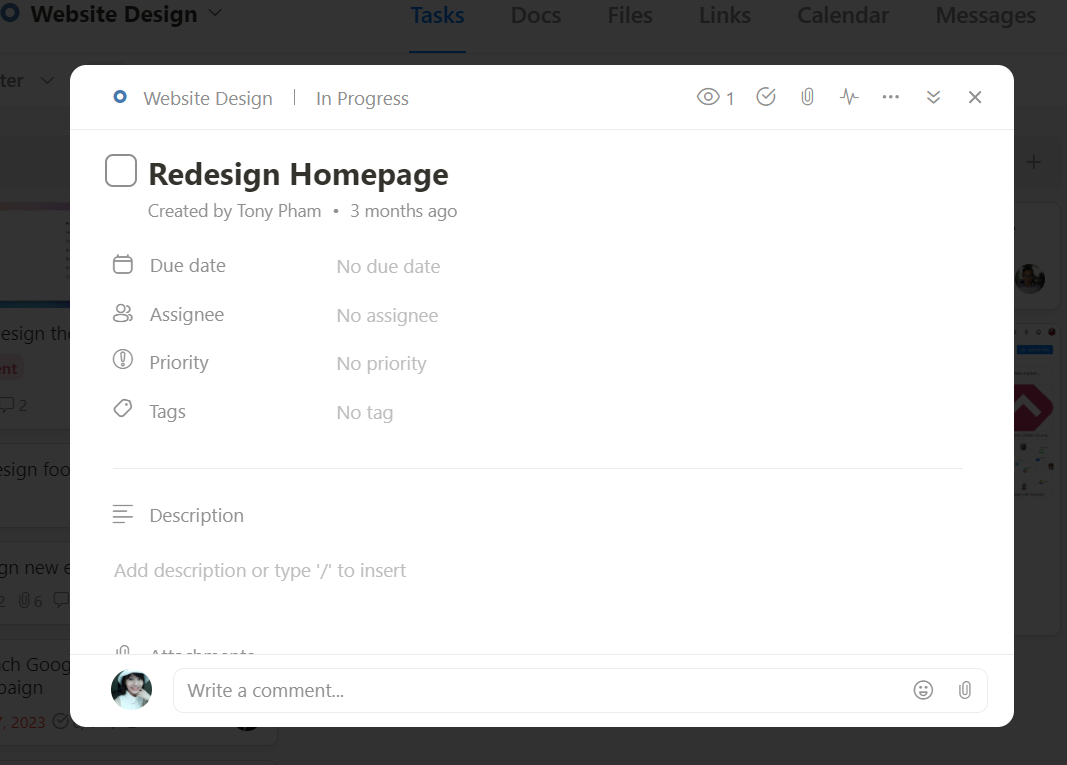
- Flexible task views, including List, Board, and Calendar, to visualize tasks in a way that suits the user best. (The Calendar offering options to view deadlines and tasks by day, week, or month.)
- Custom filters to easily tweak the view to your need.
- Drag-and-drop interface, keyboard shortcuts, and search functions for enhanced efficiency.
Upbase goes beyond just project management. It empowers your team to collaborate seamlessly in real-time:
- Files module for storing, managing file versions, and collaborating on files. Features like watchers, comments, and link sharing ensure everyone stays on the same page.
- Links module for keeping important links organized, accessed, and easy to collaborate for team members.
- Docs module for document collaboration. It allows team members to create, share, and work on documents simultaneously, along with embedding Google Docs for a unified experience.
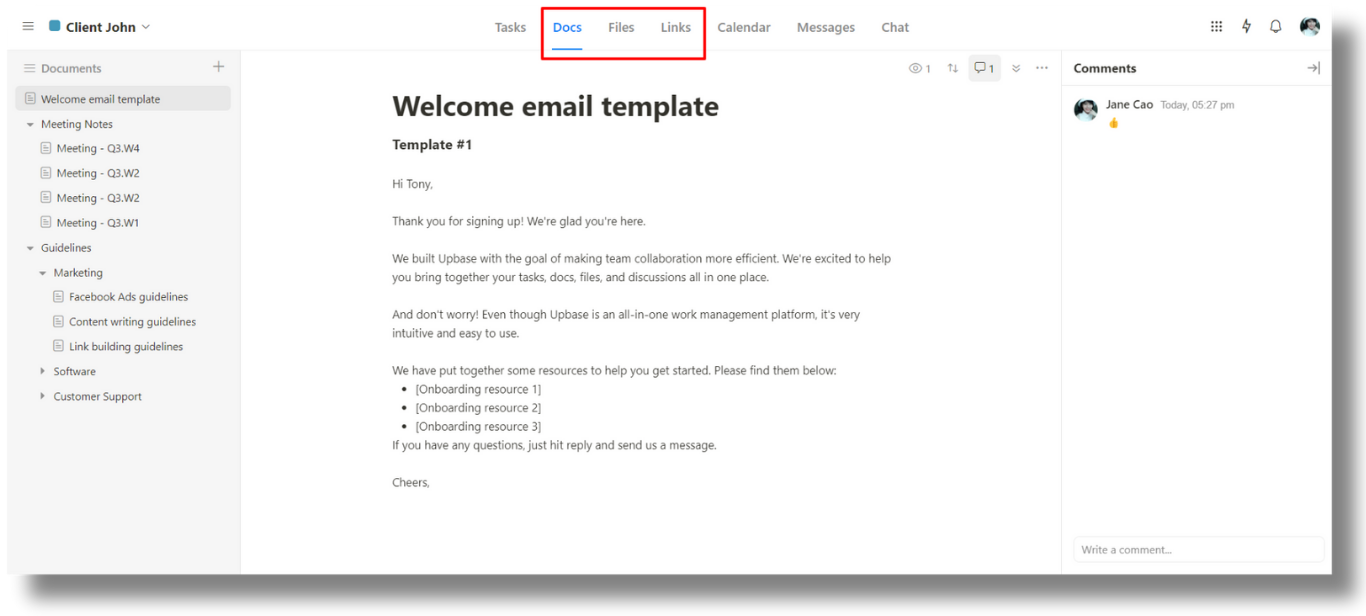
- Messages and Chat modules for real-time discussions and instant messaging, keeping your team connected.
- My Tasks page allows team members to easily manage their assigned tasks and self-created tasks, eliminating the need for a separate to-do list app.
By consolidating these functionalities into a single platform, Upbase empowers your team to collaborate effortlessly, stay organized, and achieve remarkable results together.
Upbase’s User Interface
Now, you might be thinking: “A powerful all-in-one tool sounds great, but is it complicated to learn?“
Don’t worry!
Upbase strikes a perfect balance between power and simplicity.
It boasts a well-organized layout, clean and intuitive interface, and quick navigation that won’t challenge unexperienced team members.
In fact, Upbase’s ease of use is widely praised by its customers.
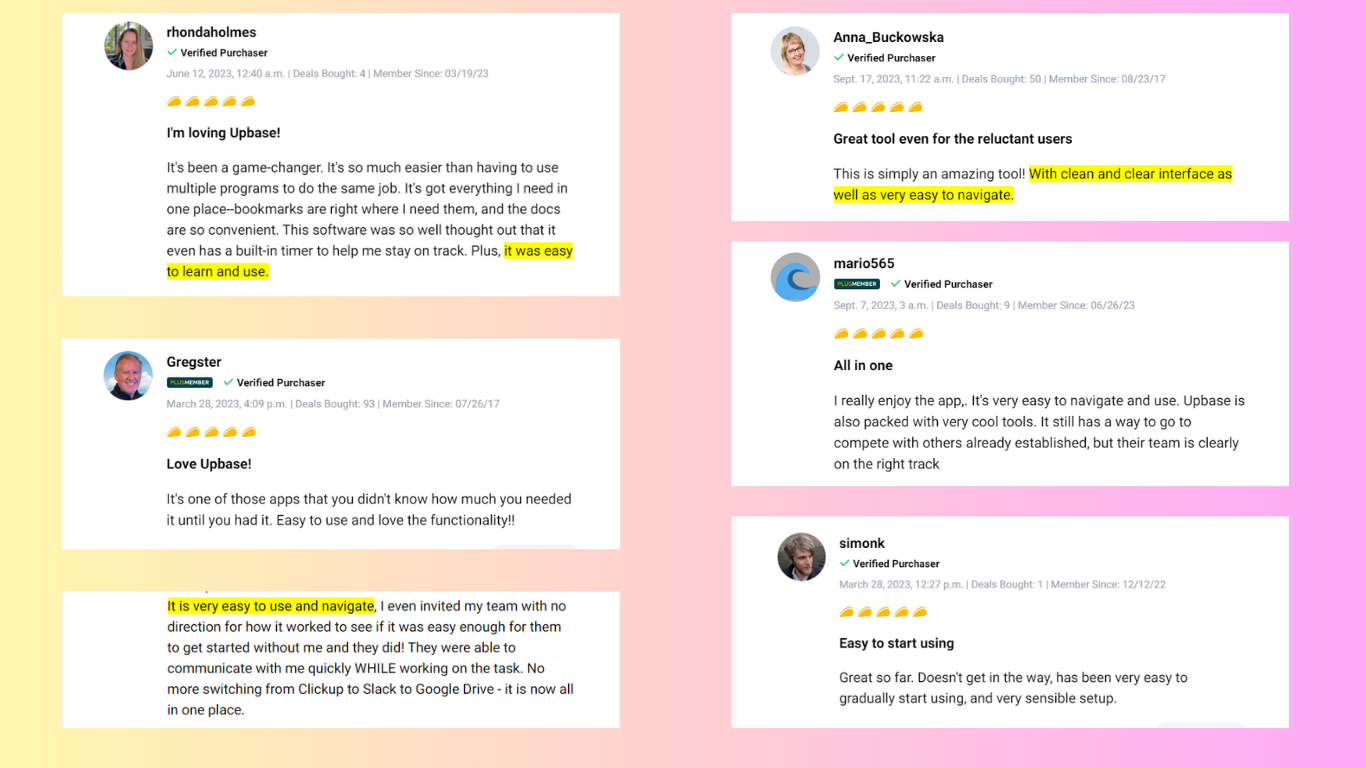
And the best part?
You can take Upbase for a spin – it offers a free-forever version.
So, what are you waiting for? Sign up for an Upbase account today and experience the power of collaborative teamwork firsthand!
VI. Tips For Improving Team Collaboration
This section gives you actionable strategies and tips for building collaborative teams even more effectively.
1. Tips on how to collaborate effectively with difficult team members
We’ve all been there – stuck collaborating with someone who makes things trickier than they need to be.
But a good news is: with a little effort, you can turn those situations around. Here are practical tips to foster collaboration with difficult team members:
- Identify the Root Cause of Their Difficulty
Are they shy? Overly critical? Do they have a different work style?
Once you understand the “why” behind the behavior, you can tailor your approach.
- Put yourself in their shoes
Empathy is key.
What might be causing them to act this way? A stressful personal life? Lack of clarity on the project?
A little empathy can go a long way in building rapport and fostering a more collaborative environment.
- Set expectations upfront and clearly
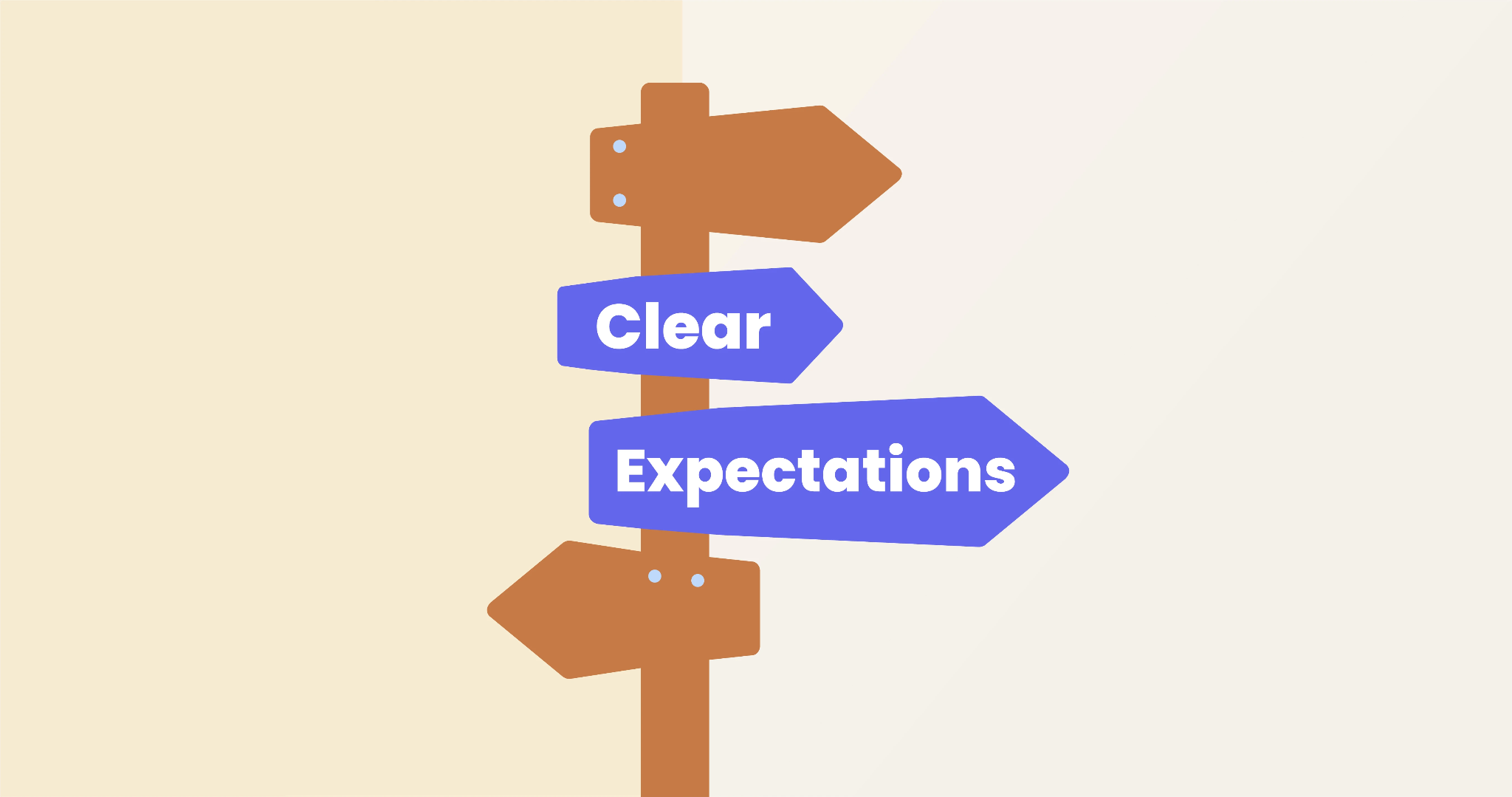
As I already mentioned—clear communication is king, especially with difficult team members.
Define roles, deadlines, and communication channels. The more everyone’s on the same page, the less room there is for misunderstandings and frustration.
- Focus on Strengths
Not everyone thrives in the same way.
Maybe this difficult teammate has incredible problem-solving skills, but struggles with brainstorming.
As the team leader, you need to identify their strengths and delegate tasks accordingly. Who knows, you might be surprised at the positive impact it has.
- Direct, Honest Conversations (Held Privately)
If things get hairy, address it directly, but do it privately.
Explain how their behavior is impacting the team and focus on finding solutions together.
Remember: Avoid accusatory language and focus on the path forward.
2. Tips and strategies to strengthen your collaborative culture
Building a dream team goes beyond just throwing talented people together. It’s about fostering an environment where everyone gels, shares ideas openly, and celebrates each other’s wins.
Here are some tips to promote healthy company culture and take your team collaboration from good to great:
- Team Building Activities
Plan social events or team-building exercises outside of work. This can help team members connect on a personal level and build trust.
- Celebrating Milestones
Take the time to acknowledge and celebrate both individual and team accomplishments to keep morale high and motivated.
- Encouraging Feedback
Create a system where team members can easily give and receive feedback from each other.
This way, your team can easily identify areas for improvement and foster continuous learning.
- Diversity and Inclusion
Make a conscious effort to build a diverse and inclusive team. This can lead to a wider range of perspectives and more creative solutions.
- Work-Life Balance
Encourage team members to maintain a healthy work-life balance.
That helps them reduce burnout and improve overall well-being, leading to better collaboration.
3. Leadership styles that promote collaboration
You know by now that strong team collaboration is the backbone of any successful projects.
But how do we, as team leaders, foster that kind of collaborative spirit? Here are a few leadership styles that I’ve found get the best results:
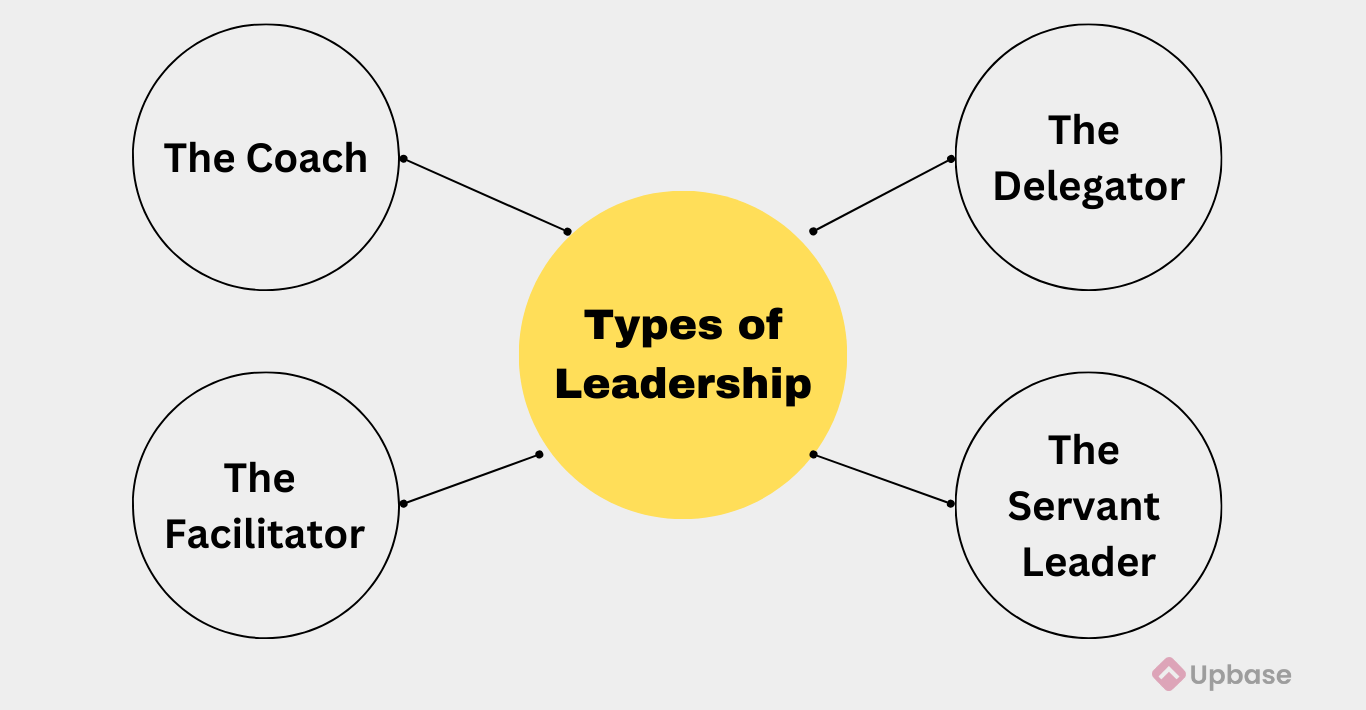
- The Coach
Think of yourself as a guide, not a dictator. Empowering your team members, giving them ownership of their tasks, and providing constructive feedback to help them grow.
- The Facilitator
Great ideas can come from anywhere.
Your role is to create a safe space where everyone feels comfortable sharing their thoughts and ideas.
That means actively listening, encouraging open discussion, and ensuring everyone has a voice.
- The Delegator (Strategically)
Micromanaging kills team collaboration.
Delegate tasks based on each member’s strengths, and trust them to run with it. This shows you value their expertise and fosters a sense of accountability.
- The Servant Leader
This one flips the script a bit.
Instead of barking orders from the top, you focus on supporting your team.
Removing roadblocks, providing resources, and celebrating their achievements.
These styles aren’t mutually exclusive, by the way. The best leaders adapt their approach based on the situation and the team they’re working with.
But remember, team collaboration is all about building trust, respect, and a shared vision.
By focusing on these styles, you’ll create an environment where your team can truly thrive together.
Time to Unleash the Power of Your Collaborative Team
Alright, let’s recap!
What is team collaboration? Well, it isn’t some fancy jargon, it’s the glue that holds a successful team together.
By building a collaborative environment, equipping your team members with the right skills, and using a good collaboration tool, you can unlock a treasure trove of possibilities.
Remember, a team that truly collaborates is like a superhero squad – together they’re unstoppable!
FAQs
1. What are the 3 crucial skills in team collaboration?
Three crucial skills for good team collaboration are:
- Communication: Sharing ideas clearly, listening actively, and using the right collaboration software are key.
- Respectful Collaboration: Value everyone’s strengths, build trust, and acknowledge all contributions.
- Conflict Resolution: Deal with disagreements constructively, find common ground, and stay positive!
2. What does cross-team collaboration mean?
Cross-team collaboration is when people from different departments work together toward the same business goals. It’s like a team sport for work!
3. Which is the best example of team collaboration?
For example, diverse teams of surgeons, nurses, and specialists work together in surgery for optimal patient outcomes.
Or, successful software team projects often involve cross-functional teams from design, marketing, and engineering.
4. What is the objective of team collaboration?
The core objective of team collaboration is to achieve more than possible alone by combining complementary skills, joint efforts, and diverse perspectives of the collaborative team members.
5. What is team collaboration in terms of IT professional?
Team collaboration for IT pros is about working together to achieve shared tech goals. This involves communication tools, shared workloads, and leveraging each other’s expertise to find optimal solutions.
6. What is a team collaboration strategy?
Team collaboration strategy = plan for working together effectively + achieving common goals.
